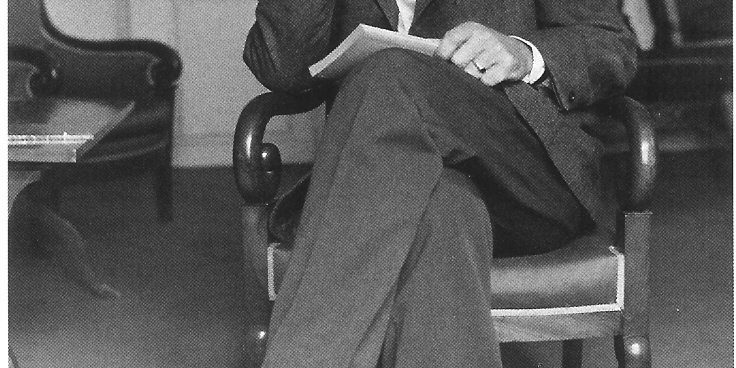*This is the first in what I hope will be a series of thoughts about Lacan and clothes. Since the summer, my friend and sometime blogger here, Chris Wojtulewicz have been reading Lacan together. Each week via FaceTime we have done a seminar on Lacan’s Seminar 7: very meta. Lacan is a genius and has a fondness for images and fables that make his thought hard to fathom. Here is the first of a few efforts to understand his significance for fashion.
At the heart of the psyche is The Thing, “the unspeakable field of radical desire.” What is in this field? Having read Lacan’s Seminar 7, a simply magnificent work, I’m still not sure: let’s wait for another post on that. However, whatever The Thing is, each of us wants to both encounter and avoid it. A ridge is built around it, somewhat like a hill fort, to block access. The ridge is what Lacan calls the symbolic, the vast array of words, mores, institutions, and rites that compose civilisation. Out of our myriad individual interactions with civilisation, parts of this array leave a vapour trail back to The Thing, and the purpose of the analyst is to identify those trails to help the patient (the analysand in Lacan’s lexicon) modify his or her relationship to The Thing.
In Chapter 17 of Seminar 7, Lacan calls this array, cloth. You and I make holes for our heads and arms to pop through the cloth. We are individualized in doing so: the person “begins to organize himself as clothed.” Our identity is always exposed to fashion because the symbolic “is originated only when it is fabricated, when it is open to the world, to age and to newness.” Our identity is not a site of freedom for the engine of my identity is not an autonomous self. Identity is constituted at a level below the self: in Lacan’s thinking it might be more accurate to think of me — what he terms the subject — as more an automated machine (this theme comes out strongly in Seminar 2 and his discussion there of the imaginary). I am constituted in primordial family involvements.
However, in another way, my assertion (and it is not too strong a word) of identity amidst fashion is freedom but only with a dark tinge. The symbolic sets me at a distance from my subjectivity, my gravest identity, the field I want to enter, and not. This appetite to have and not have is not simply formalistic but lived out in aggressive bewilderment, what Lacan calls jouissance. It is in the symbolic, inside cloth, that this aggressive bewilderment plays: the appetite to have and not have becomes the birth of power; my assertion means I have and you do not have. Lacan:
“To exercise control over one’s goods, as everyone knows, entails a certain disorder, that reveals its true nature, i.e., to exercise control over one’s goods is to have the right to deprive others of them.”
What does this means for fashion? The end of the bromides: fashion is not about liberation, benevolence, and titillation. It is about fetishization: law and property, hierarchy and privilege, master and slave. Fashion is not about being a citizen of the world but jouissance.







